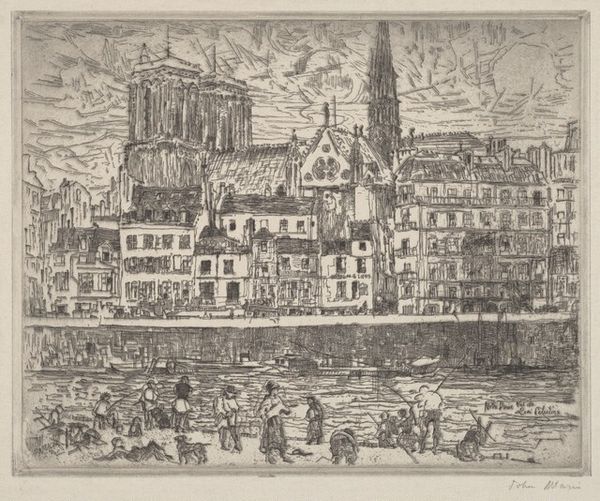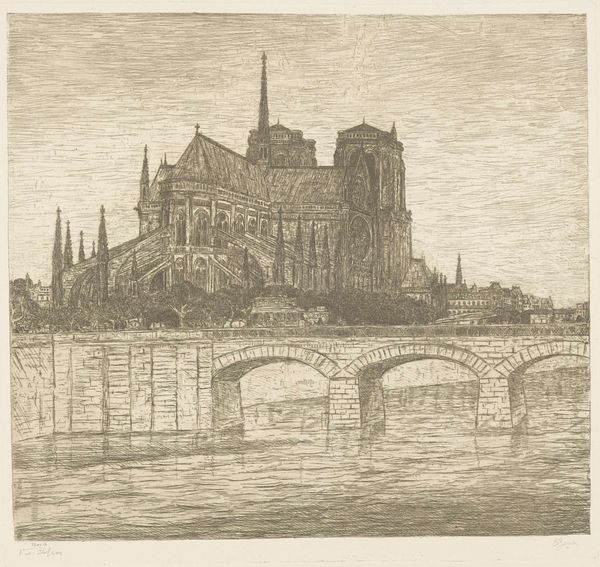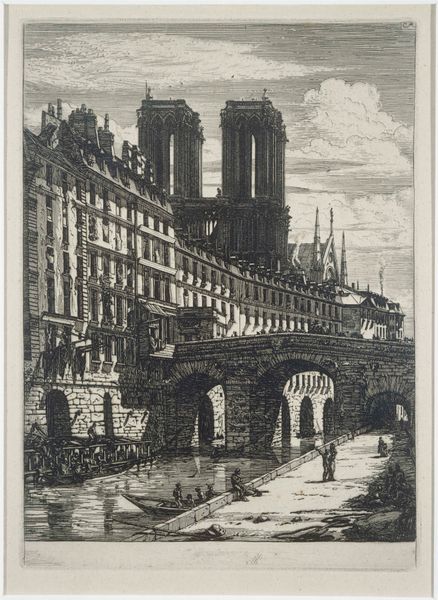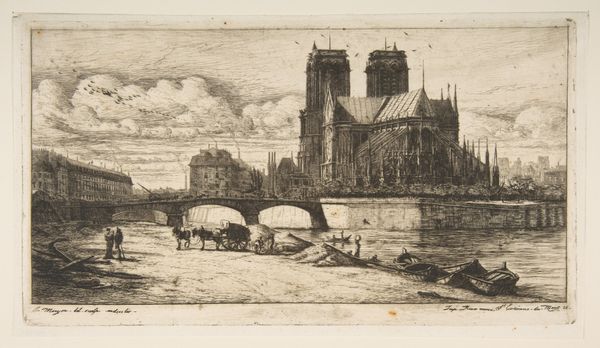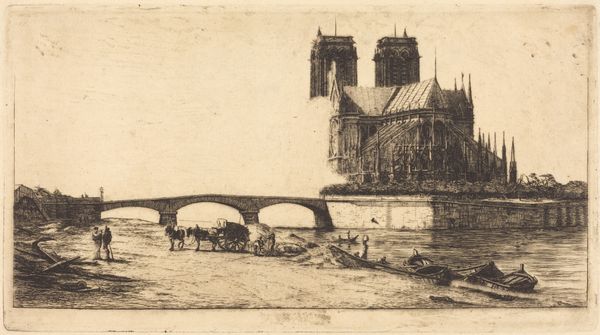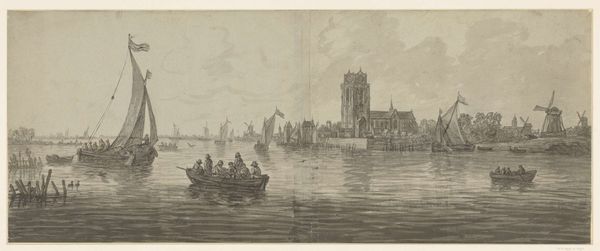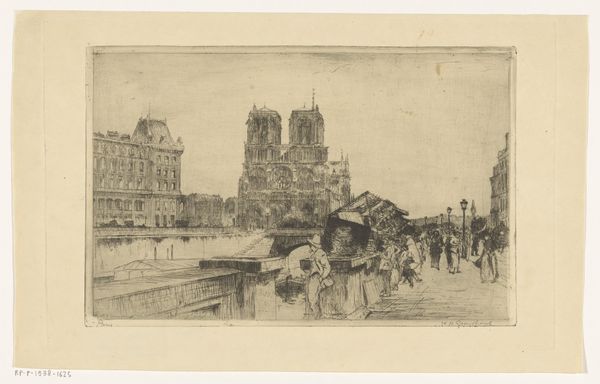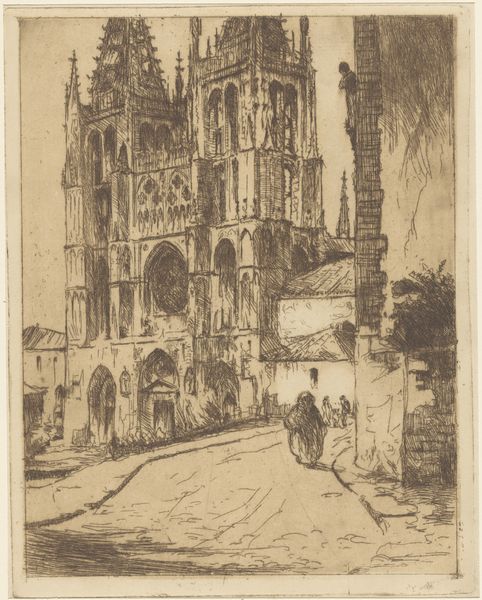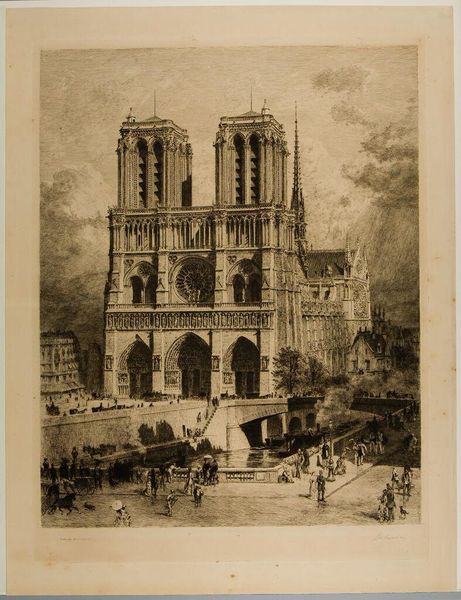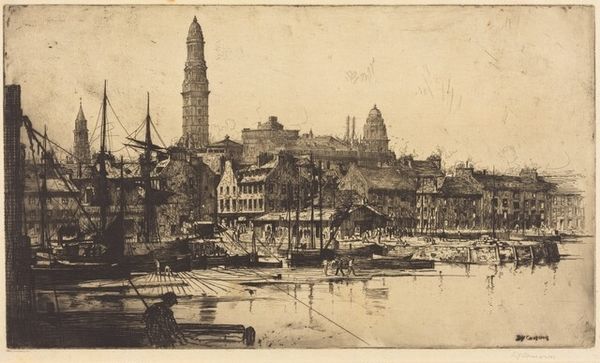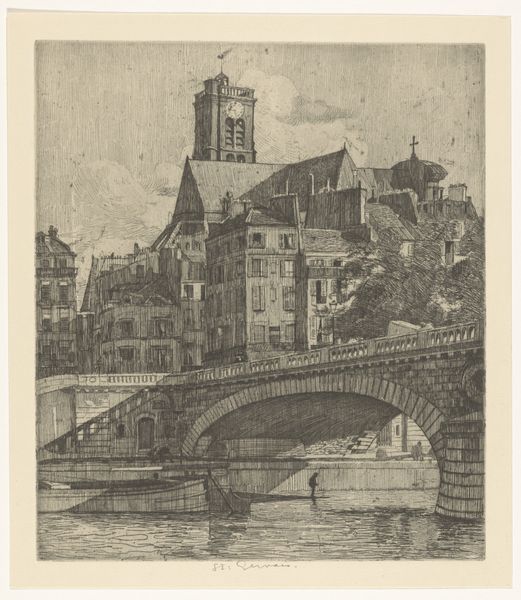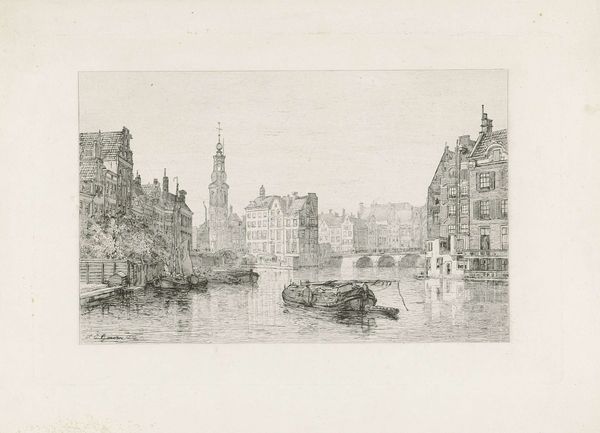
print, etching
#
medieval
# print
#
pen sketch
#
etching
#
landscape
#
etching
#
perspective
#
line
#
cityscape
Dimensions: plate: 29.85 × 22.54 cm (11 3/4 × 8 7/8 in.) sheet: 44.93 × 32.86 cm (17 11/16 × 12 15/16 in.)
Copyright: National Gallery of Art: CC0 1.0
Editor: This is Frank P. Whiting’s "Notre Dame—Paris," an etching from the 1940s. The detail is incredible! There's something almost dreamlike about the reflection in the water. How do you read this work, especially considering its historical context? Curator: This etching compels us to consider architecture as a symbol of power, both religious and national. The Notre Dame cathedral, deeply rooted in medieval history, becomes a focal point for discussions around cultural identity. Given that this was created in the 1940s, the shadow of World War II looms. Does this portrayal romanticize a past while Europe was embroiled in conflict? How might its creation during wartime inform our reading of it today, especially thinking about nationalism and its intersection with religion? Editor: That's fascinating! I hadn't considered the impact of the war era on its creation. I was initially focused on the technique and the beauty of the architectural details, but framing it within the context of nationalism makes me think about its symbolism in a completely different way. Curator: Exactly. And consider this: the choice of etching, a medium with a long history itself, adds another layer. It speaks to tradition and craft, perhaps even longing for a sense of permanence during a time of intense upheaval. Do you see this piece as simply a landscape, or does it function as a commentary? Editor: I see your point. The meticulousness definitely elevates it beyond a simple depiction of a building. It's more like a statement, maybe about the enduring spirit of Paris. Thanks, I never would have thought of it that way on my own! Curator: Precisely, art invites these connections, enriching our comprehension of its significance in diverse and relevant cultural spheres. Editor: Absolutely. It’s a great reminder to consider the socio-political backdrop while analyzing the aesthetic elements.
Comments
No comments
Be the first to comment and join the conversation on the ultimate creative platform.
